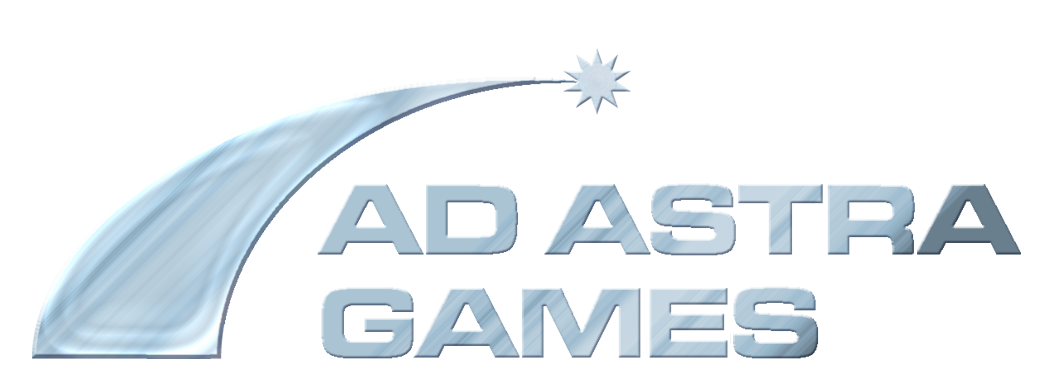Attack Vector: Tactical (AV:T) and Squadron Strike (SS) are both 3D space combat games. They have some common design elements because of that 3D nature.
AV:T was published first, and is space combat with real physics. By real physics, I don't mean "Oh, it has vector movement." I mean "Oh, it has vector movement with segmented continuous acceleration over time, fuel tracking that uses the rocket equation, and thrust that increases as your ship's mass decreases from spending fuel, as well as pilot-perspective orbital mechanics."
In a manual wargame, that's actually playable by human beings without a pocket calculator. Your brain may have to stretch, but the math has been carefully done for you by the play aids.
It also has power generation, heat dissipation, and damage modeling based off of physical constants as we know them, kinetic weapon launches where the damage goes up at the square of the impact velocity, and laser ranges defined by Rayleigh scattering, focal array sizes and beam wavelengths.
You can argue with the underlying technological assumptions in AV:T - it's got a double-talk handwavy FTL drive so we can go to strange star systems and have fun with imaginary biology.
It makes some assumptions about fusion drive torches that, while not physically *impossible* are engineering we don't know how to do yet....but for the most part, if you thought Traveller, Niven or Heinlein were hard science, this will be an eye opener.
It uses segmented movement, like Federation Commander or Star Fleet Battles. When you do something in the game, you're usually setting a timer for when you can do it again, like a lot of video games do behind the scene, or expending a resource, or imparting a vector you need to correct for later.
It is very much a "flight simulator with rocketships."
Squadron Strike (SS) was published second, and is a simpler game engine with whole turn movement. It is also designed around the availability of a ship design spreadsheet, and later on, utilities for printing your own ships in pretty formats. Its sweet spot is about 3-6 ships per player. It has optional 2D SSD displays; when used, those 2D SSD displays allow you to handle about a dozen ships, which makes it a good fleet game at that scale.
Its ship design engine is the most thorough one that's commercially available. If you want Babylon 5 Minbari fighting Cylon Basestars while the Star Trek Federation is coming in to play spoiler...it not only can do it, but I run that game at conventions.
SS is all about flexibility in play and flexibility in ship designs. It has three different sets of movement rules, named after the number of Newton's Laws being obeyed.
Mode 0 means your ship moves like an ox-cart. When you turn off your engines, the ship will slow down to a stop. Lots of Anime universes use this type of movement.
Mode 1 means your ship moves like an airplane. It has momentum through its front. Your ship accumulates thrust from turn to turn, has no top speed, and slows down by turning. If you turn off your engines, you keep moving according to your momentum. It's a good match for how the Minbari and Vorlons and Shadows moved in Babylon 5.
Mode 2 means your ship moves like a spaceship. It has vectors that are independent of its facing. If you accumulate a velocity of 8 in direction A, to slow down, you've got to pivot 180 degrees (to direction D) and apply thrust in the opposite direction. It's a good match for how Earth Alliance ships moved in Babylon 5 and how fighters moved in nuBSG.
In SS, you can have fleets with different movement modes fighting on the table at the same time. You can also design weapons and choose the type and quantity of the defenses on your ship, and have more control over ship design than any other game on the market. SS ships are comparable in detail to Federation Commander ships, but can be clean-sheet created from scratch.
We sell both of them directly - Deluxe editions print the rulebook in full color, and it's worth every penny of the extra $10 to see the play aids (which are all color coded, anyway) in color as part of the process.
